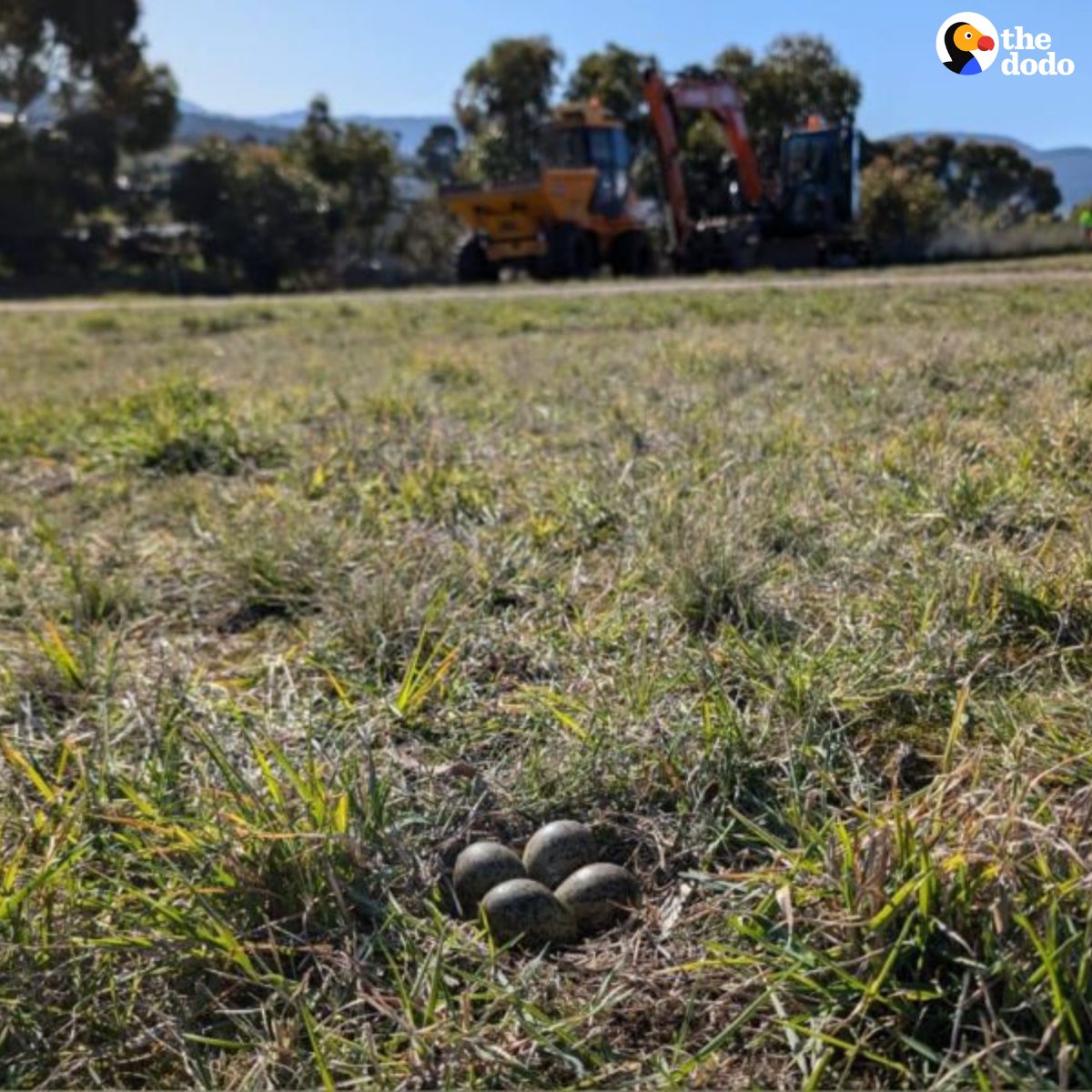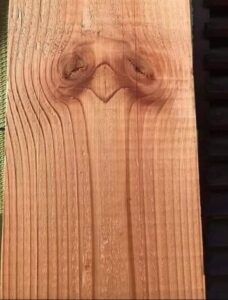Sometimes, progress has to pause to protect life. 🕊️
That’s exactly what happened recently at Bonorong Wildlife Sanctuary in Tasmania, when a group of workers halted construction after discovering a nest of mysterious eggs in the grass — leading to a touching rescue that proves humanity and wildlife can coexist with care.
A Routine Project Turns Into a Rescue
While carrying out driveway upgrades to improve access roads at the sanctuary, the crew spotted four small, speckled eggs nestled in the grass — directly in the path of heavy machinery.
“Like many workplaces, sometimes this involves using machinery,” explained operations manager Petra Harris. “But wildlife safety always comes first for us.”
Without hesitation, Harris and her team called off all machinery in the area and moved in carefully to assess the scene.
Mystery Solved: They Belonged to Masked Lapwings
To an untrained eye, the eggs might’ve looked random — perhaps even abandoned. But the wildlife experts quickly recognized them as belonging to masked lapwings, large native birds found across Australia, New Zealand, and New Guinea.
“The parent birds were close by, keeping a watchful eye,” Harris said. “As soon as we paused work and left the area, the parents quickly returned to the nest to continue caring for the eggs.”
Their vigilance paid off — and their decision to stop the bulldozers likely saved an entire family.
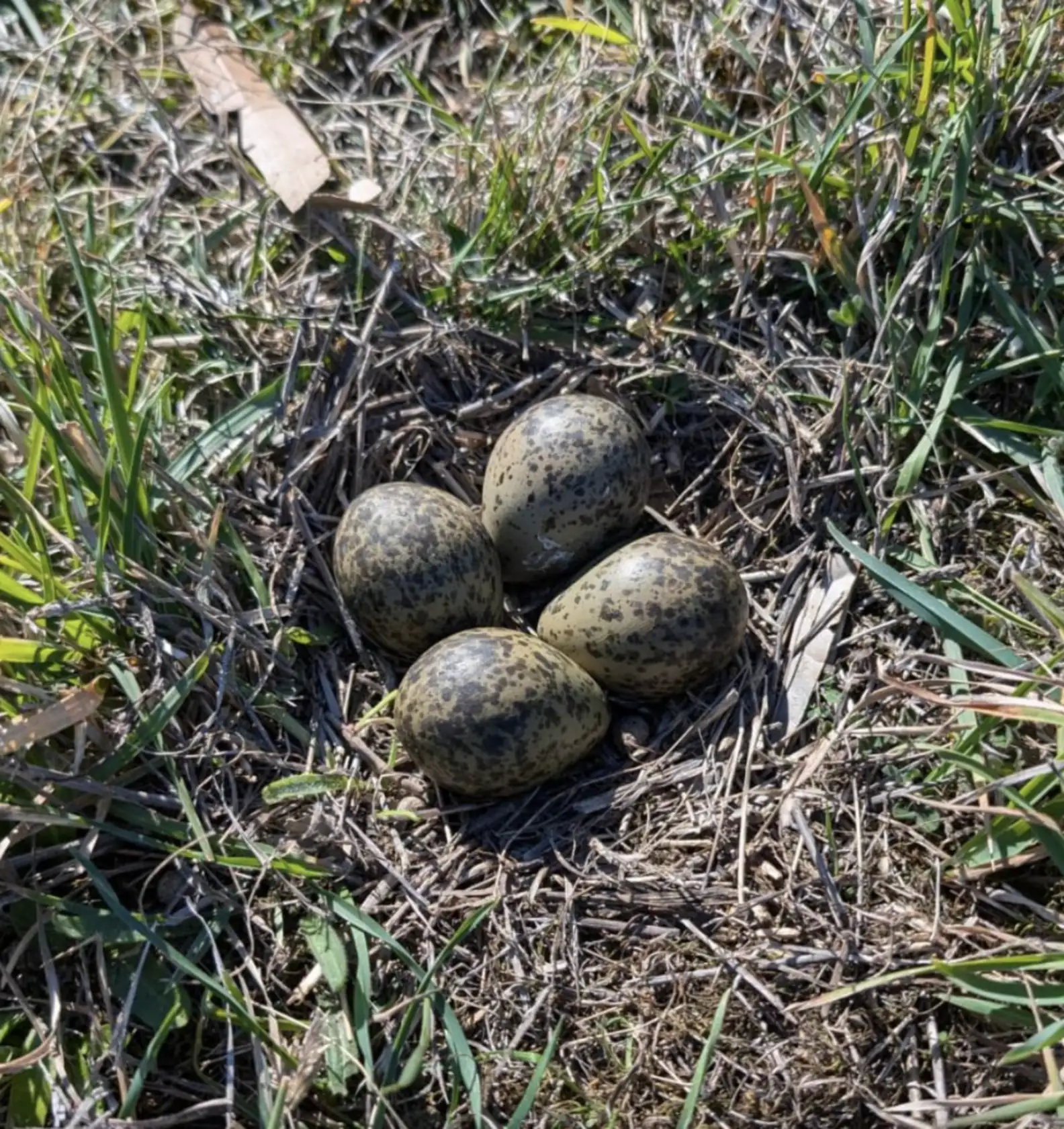
Why These Birds Needed Special Protection
Masked lapwings are ground-nesting birds, which makes them especially vulnerable in human-modified areas like construction zones, parks, and open fields.
If their nests are disturbed, parents may temporarily flee, leaving eggs exposed to predators or harsh weather. Even a short disruption can spell disaster.
“Ground-nesting birds like lapwings are especially vulnerable,” Harris noted. “Keeping nests safe gives these birds the best chance of raising their young successfully.”
The sanctuary team decided to mark off and monitor the nesting area, ensuring that all work stayed clear until the family’s safety was guaranteed.
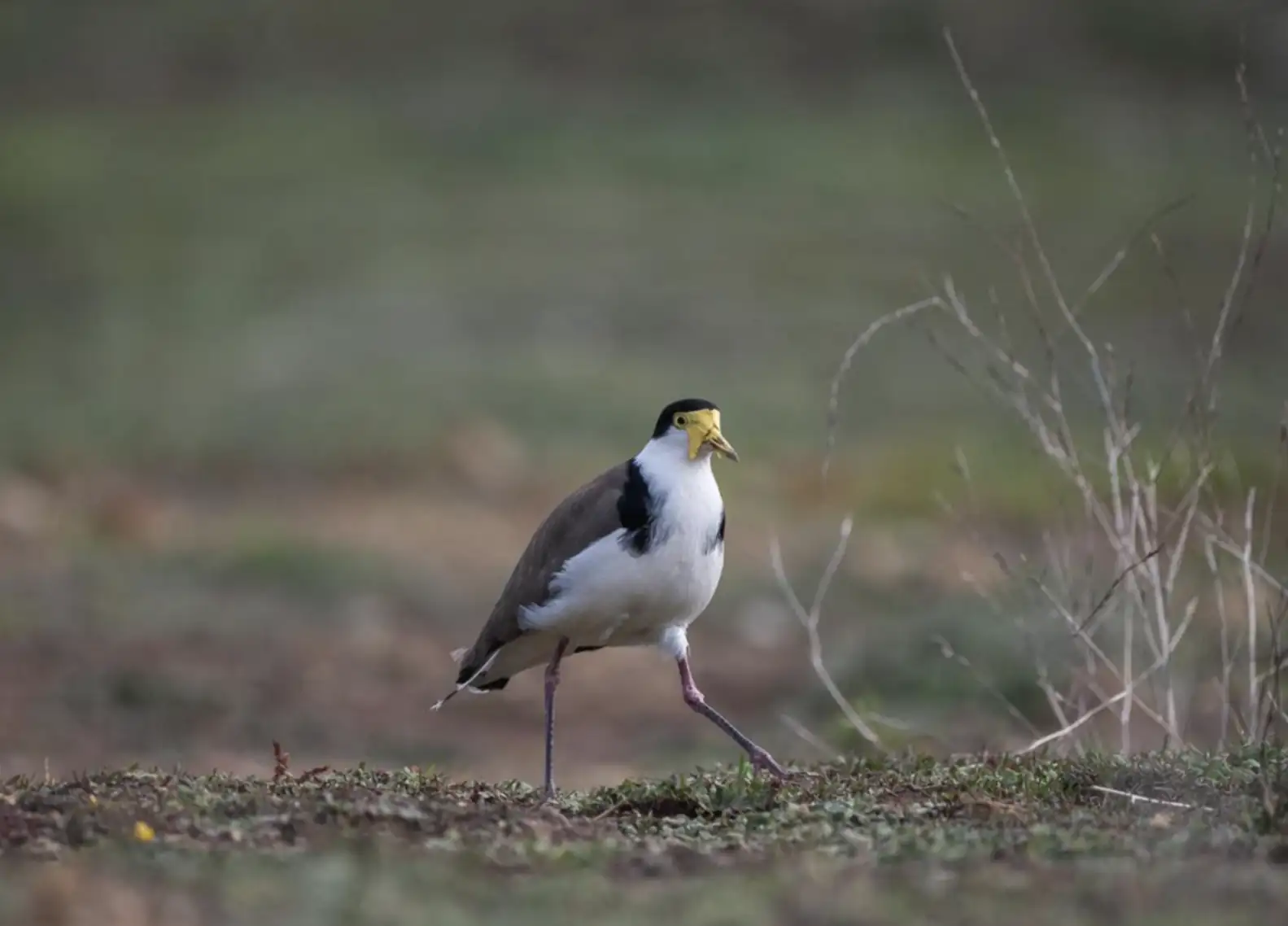
Tiny Miracles Emerge
Days later, the sanctuary’s patience was rewarded — the eggs hatched into tiny, fluffy lapwing chicks.
The new parents wasted no time teaching their babies how to forage, stay alert, and navigate their environment.
“These chicks will stay with their parents for the next 5 to 7 months,” Harris said. “They learn important survival skills, and some families even stay together for up to two years.”
The sight of the chicks exploring under their parents’ watchful gaze reminded everyone on-site why wildlife conservation matters — even in the smallest, most unexpected moments.
Balancing Development and Nature
Though the construction delay caused a mild inconvenience, the sanctuary viewed it as a necessary pause in the name of coexistence and conservation.
“Every project, no matter how small, impacts local ecosystems,” Harris explained. “The key is being alert and flexible enough to protect the lives that share our space.”
For Bonorong Wildlife Sanctuary, it’s more than policy — it’s their philosophy.
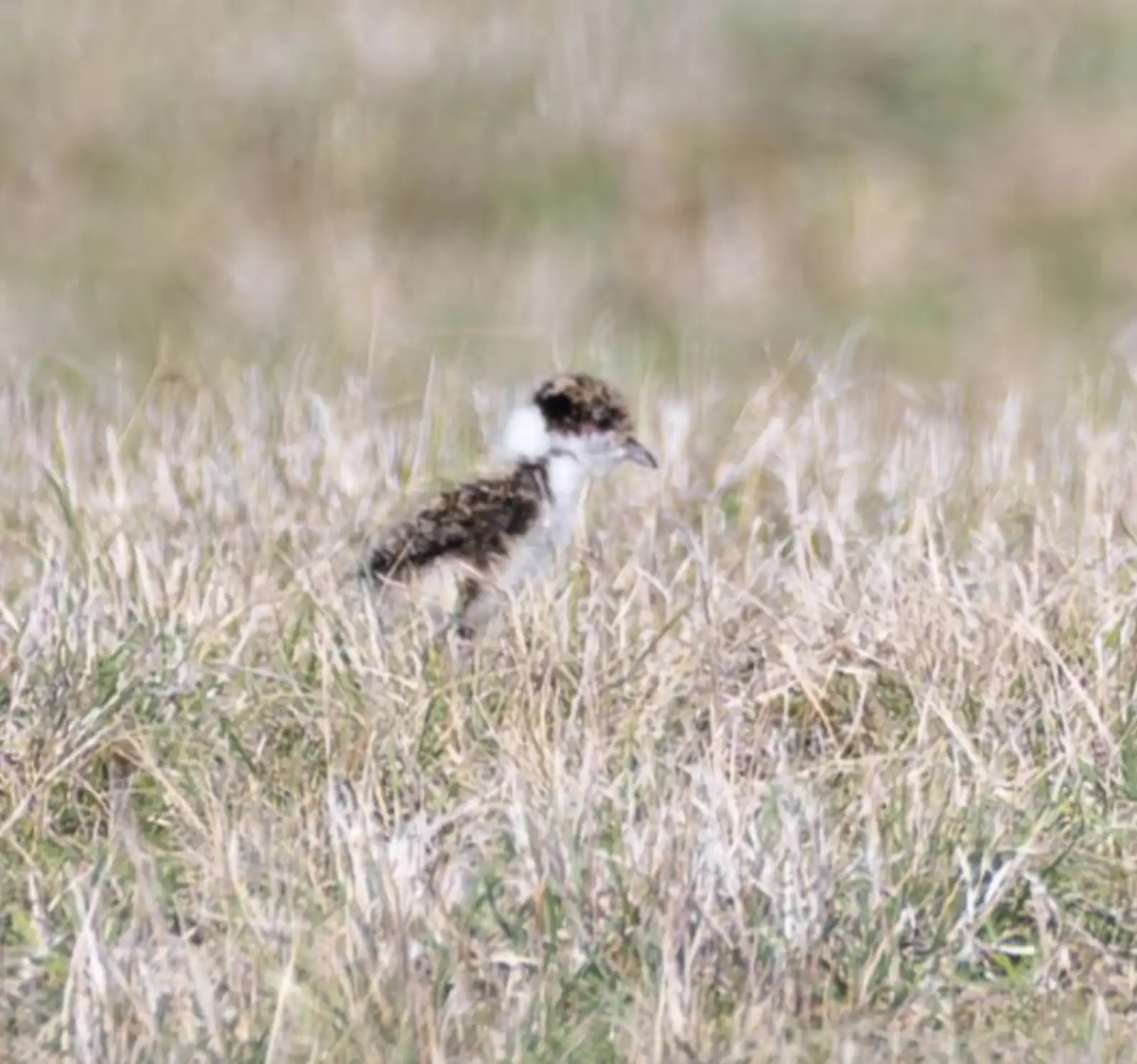
Why Awareness Like This Matters
All across the world, countless animals lose their habitats to urban development. But as this incident shows, awareness can make a profound difference.
If the team hadn’t spotted those eggs, the outcome could’ve been tragic. Instead, it became a beautiful reminder that progress and protection can go hand in hand.
“Wildlife safety always comes first,” Harris said proudly.
How You Can Help Wildlife Near Construction
Even if you’re not managing a sanctuary, you can still make a big difference:
-
Check before you dig or mow. Many ground-nesting birds — from plovers to killdeer — hide eggs in plain sight.
-
Mark off nests if you find them, and notify local wildlife authorities.
-
Educate workers and neighbors about the importance of seasonal nesting awareness.
-
Use natural barriers to keep pets and equipment away from active nests.
-
Celebrate success stories — like Bonorong’s — to inspire others to act responsibly.
”
Final Thoughts
The discovery of those speckled eggs could have easily gone unnoticed. But thanks to the vigilance and compassion of a few dedicated rescuers, new life was given a chance to thrive.
In a world constantly racing forward, moments like these remind us that progress means nothing without preservation.
Sometimes, the best thing we can do for nature is simply — stop, look, and listen. 🌿
